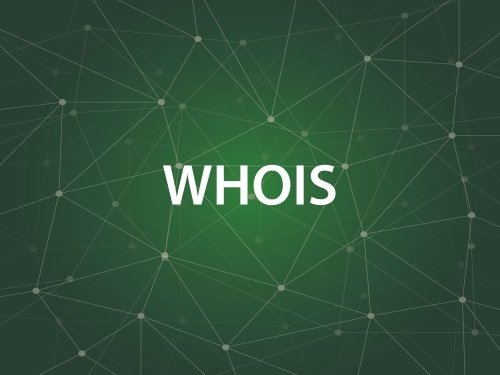WHOIS is Rising in Popularity, But Is The Data Reliable?
Doubt a website? Alternatively, buying a domain name and would like to verify the exact details of the site owner before moving ahead? WHOIS is your perfect answer. It is a database of domain names and the details of the owners; the person you need to contact. Well, all registrars of domain names mostly in the generic top-level domain are obligated by the Internet Corporation for Assigned Names (ICANN) to provide a public, searchable online database of the domain owners. Such records have proved to be a very useful resource for law enforcement, trademark owners, consumers and many more.
What’s in The WHOIS Record?
According to regulations by the ICANN, the database ought to possess all the contact data of the personalities, groups, or company that registers a domain name. It holds the information of the registrant and the registrar. All this data needs to be in full detail and must include the exact date of registration of the domain, the name of the servers, the latest update, and the expiration date. You can try free domain tools. Domain checker tools can help you in understanding the age and authority of the domain name.
How’s Data Stored There?
There are two data models for storing information. With a thin model, a lookup only delivers discrete data; these are things like the registrar, server name and registration date. If this isn’t sufficient for your search, you can do a secondary lookup at eh registrar on file. Those that require more detailed information can utilize a thick model whereby you can get more data than what you can observe in the WHOIS database.
How Accurate is the WHOIS Database?

All the data present in the WHOIS database is provided once a domain is registered. Of course, some inaccuracy might appear after some time since after some time, the situation changes and the details provided during registration might not be accurate anymore. However, ICANN requires all registrants to update their data to maintain WHOIS database accuracy. According to ICANN data accuracy rules, those that hold on to misleading data can have their domains cancelled.
Upon registration and during the term that the domain remains active, the registrant ought to provide the full name, postal address, email address, telephone, and fax number if present. They also need to offer an authorized person of contact. Among the details presented, there also needs to be the primary and secondary name servers, personal details of the technical contact as well as the details of the administrative contact. Failure to accurately provide this data will amount to a breach of the agreement. You can hide the whois with privacy options.
Any individual can file a complaint against false or outdated data, and the registrar is required to perform an update in not less than fifteen days. Such matters that can render WHOIS data unreliable have attracted the attention of various stakeholders that are placing measures to make sure that the data is accurate as possible. Therefore, full WHOIS database accuracy is growing progress, but it is still reliable.
WHOIS Privacy
It is hard to hide your domain registration as any person can perform a check. ICANN requires all this data to be in the public domain. Although most people would prefer not to publish personal data here, updating false information is valid grounds for cancellation.


